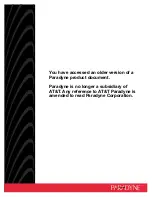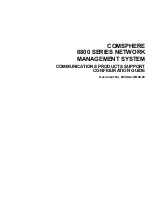
1-19
Catalyst 4500 Series Switch, Cisco IOS Software Configuration Guide - Cisco IOS XE 3.9.xE and IOS 15.2(5)Ex
Chapter 1 Product Overview
Layer 3 Software Features
The IS-IS Protocol uses a two-level hierarchy. Intermediate Systems (or routers) are classified as Level
1 and Level 2. Level 1 intermediate systems deal with a single routing area. Traffic is relayed only within
that area. Any other internetwork traffic is sent to the nearest Level 2 intermediate systems, which also
acts as a Level 1 intermediate systems. Level 2 intermediate systems move traffic between different
routing areas within the same domain.
An IS-IS with multi-area support allows multiple Level 1 areas within in a single intermediate system,
thus allowing an intermediate system to be in multiple areas. A single Level 2 area is used as backbone
for inter-area traffic.
For details on IS-IS, refer to this URL:
http://www.cisco.com/en/US/products/ps6632/products_ios_protocol_option_home.html
OSPF
The Open Shortest Path First (OSPF) protocol is a standards-based IP routing protocol designed to
overcome the limitations of RIP. Because OSPF is a link-state routing protocol, it sends link-state
advertisements (LSAs) to all other routers within the same hierarchical area. Information on the attached
interfaces and their metrics is used in OSPF LSAs. As routers accumulate link-state information, they
use the shortest path first (SPF) algorithm to calculate the shortest path to each node. Additional OSPF
features include equal-cost multipath routing and routing based on the upper-layer type of service (ToS)
requests.
OSPF uses the concept of an
area
, which is a group of contiguous OSPF networks and hosts. OSPF areas
are logical subdivisions of OSPF autonomous systems in which the internal topology is hidden from
routers outside the area. Areas allow an additional level of hierarchy different from that provided by IP
network classes, and they can be used to aggregate routing information and mask the details of a
network. These features make OSPF particularly scalable for large networks.
For details on OSPF, refer to this URL:
http://www.cisco.com/en/US/tech/tk365/tk480/tsd_technology_support_sub-protocol_home.html
RIP
The Routing Information Protocol (RIP) is a distance-vector, intradomain routing protocol. RIP works
well in small, homogeneous networks. In large, complex internetworks it has many limitations, such as
a maximum hop count of 15, lack of support for variable-length subnet masks (VLSMs), inefficient use
of bandwidth, and slow convergence. RIP II does support VLSMs.
For details on RIP, refer to this URL:
http://www.cisco.com/en/US/tech/tk365/tk554/tsd_technology_support_sub-protocol_home.html
In Service Software Upgrade
SSO requires the same version of Cisco IOS on both the active and standby supervisor engines. Because
of version mismatch during an upgrade or downgrade of the Cisco IOS software, a Catalyst 4500 series
switch is forced into operating in RPR mode. In this mode, after the switchover you can observe
link-flaps and a disruption in service. This issue is solved by the In-Service Software Upgrade (ISSU)
feature that enables you to operate in SSO/NSF mode while performing software upgrade or downgrade.
ISSU allows an upgrade or downgrade of the Catalyst IOS or IOS XE images at different release levels
on the both the active and standby supervisor engines by utilizing the Version Transformation
Framework between the stateful components running on each supervisor engine.
Summary of Contents for Catalyst 4500 Series
Page 2: ......
Page 4: ......
Page 2086: ...Index IN 46 Software Configuration Guide Release IOS XE 3 9 0E and IOS 15 2 5 E ...
















































